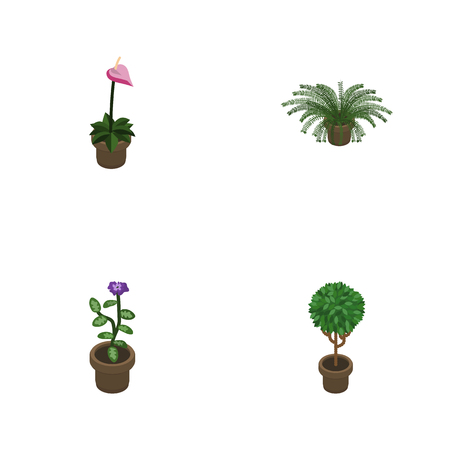Embracing Garden Heritage: The Importance of Borders in British Gardens
When one strolls through the quintessential British garden, it is impossible to overlook the carefully composed borders that frame lush lawns and stately hedges. These borders are not merely decorative; they are deeply rooted in the nation’s gardening heritage. Dating back to the grand estates of the Georgian and Victorian eras, borders have long served as a means to delineate space, create order, and guide the eye through a tapestry of greenery and blooms. In many ways, these traditional lawn and hedge borders have become emblematic of our collective landscape aesthetic—evoking memories of sun-dappled afternoons and tranquil Sunday walks. Their enduring charm lies in their versatility; whether crisp box hedging or soft herbaceous edges, borders help maintain structure throughout the changing seasons while providing a canvas for both restraint and exuberance. For generations, British gardeners have taken pride in the artful placement of plants along these boundary lines, understanding that a well-defined border not only enhances visual appeal but also honours time-honoured practices passed down from one green-fingered enthusiast to another.
2. Choosing the Right Planters for a Cohesive Look
If you’ve ever wandered through a quintessential British garden, you’ll know that every element—be it a clipped yew hedge or a velvet green lawn—works together to create a sense of understated harmony. When introducing planters into these traditional settings, it’s crucial to select options that blend seamlessly with existing features rather than compete for attention. The right planter can elevate an outdoor space, providing structure, colour, and seasonal interest without undermining the heritage charm.
Materials: Tradition Meets Durability
Classic British gardens often favour materials that have stood the test of time—think terracotta, stoneware, and cast iron. Each material brings its own character:
| Material | Pros | Cons |
|---|---|---|
| Terracotta | Timeless appeal; encourages healthy root growth; weathers beautifully | Can crack in frost; requires winter protection |
| Stoneware | Robust and durable; blends well with old stone walls and paths | Heavy to move; may be costly |
| Cast Iron | Elegant Victorian touch; highly durable if maintained | Prone to rust if untreated; very heavy |
Colours: Subtlety is Key
The prevailing wisdom in British garden design is to avoid anything too garish. Neutral tones such as weathered grey, mossy green, or natural earth shades will always sit comfortably alongside lush lawns and manicured hedges. If you do wish to introduce a splash of colour, consider deep blues or heritage greens—hues often seen on traditional wooden benches and garden gates.
Styles: Echoing the Landscape
Selecting the right style is about echoing what’s already present in your garden. Here’s how different planter shapes work with classic elements:
| Planter Style | Best With… |
|---|---|
| Troughs & Rectangular Boxes | Low box hedging, edging lawns, defining pathways |
| Urns & Classical Vases | Formal entrances, focal points amidst topiary or roses |
| Tapered Pots & Bowls | Cottage borders, informal corners, under mature trees |
Selecting for Harmony: Practical Tips from Experience
Avoid over-cluttering—a handful of well-chosen planters can say more than a jumble of mismatched pots. Place planters where they’ll soften transitions between hard surfaces (like patios) and living borders. Finally, keep scale in mind: large containers suit spacious lawns and sweeping hedges, while petite pots are perfect for smaller courtyards or alongside winding brick paths.

3. Placement and Layout: Creating Visual Flow
When it comes to integrating planters into the classic British garden, careful placement is paramount for achieving that seamless, well-tended look so beloved across the UK. Start by considering the borders themselves—whether you’re working alongside a manicured hedge or traditional lawn edge, planters should never disrupt the visual flow. Instead, aim to position them where they naturally complement the existing lines of your garden. A good rule of thumb is to space planters evenly, allowing at least an arm’s length between each vessel; this ensures a sense of order while preventing overcrowding, which can quickly tip a border from charming to chaotic.
Arranging for Balance and Interest
Variety in height and shape plays a crucial role in creating interest along your borders. Place taller planters towards the back when bordering a hedge, or use them as subtle punctuation marks along longer stretches of lawn. Low-profile containers nestle beautifully at the front, allowing classic bedding plants and perennials to spill over gracefully without obscuring the view. The key is to maintain a consistent rhythm—think of it as arranging ornaments on a mantelpiece, each piece thoughtfully spaced and never competing for attention.
Maintaining Clear Sightlines
One hallmark of British gardens is their neatness; sightlines should remain uncluttered, guiding the eye smoothly from one vista to the next. Avoid placing planters directly in the middle of pathways or at awkward angles that break up the symmetry of a border. Instead, tuck them into gentle curves or use them to frame entrances and seating areas. This not only preserves those quintessentially tidy lines but also creates inviting focal points throughout your outdoor space.
Practical Tips for Lasting Results
Finally, remember that maintenance is just as important as initial layout. Regularly realign planters if they shift and trim any overgrown foliage to keep borders crisp. By staying attentive to spacing and arrangement, you’ll ensure your integrated planters look intentional and harmonious year-round—a true reflection of timeless British gardening tradition.
4. Integrating Seasonal Interest
The British garden is renowned for its ever-changing palette, following the natural rhythm of the seasons and offering visual delight all year round. Integrating planters into traditional lawn and hedge designs allows gardeners to introduce both seasonal blooms and evergreens, ensuring that every corner remains inviting regardless of the month. This approach not only enlivens formal borders but also pays homage to the cherished cycle of growth and renewal that characterises classic British gardening.
Introducing Year-Round Colour
Planters serve as versatile vessels for displaying vibrant annuals in spring and summer—think pansies, petunias, and lobelia—while autumn welcomes bursts of colour from cyclamen and ornamental cabbages. When winter arrives, hardy evergreens like box or holly in planters keep spaces lively even as frosts settle over lawns and hedges. The ability to rotate plantings with each season ensures your outdoor space never loses its charm, echoing the beloved tradition of changing bedding displays in historic English gardens.
Seasonal Planter Suggestions
| Season | Suggested Plants |
|---|---|
| Spring | Tulips, Daffodils, Primroses |
| Summer | Geraniums, Petunias, Lavender |
| Autumn | Cyclamen, Heathers, Ornamental Kale |
| Winter | Box (Buxus), Skimmia, Holly |
The Rhythm of Tradition
The use of planters to punctuate lawns and border hedges is more than a question of aesthetics; it is a reflection of time-honoured practices where the garden responds to the seasons. In keeping with British sensibility, it’s about embracing subtlety—placing pots where they draw attention without overwhelming the eye, blending seamlessly with existing plantings while allowing for moments of surprise. This method respects the old whilst welcoming the new, offering a practical solution for those who cherish both continuity and change in their gardens.
5. Balancing Maintenance with Aesthetics
There’s a certain charm in a well-kept British garden, where understated elegance is achieved not through flashy displays but by subtle harmony between lawns, hedges, and planters. For those who cherish their outdoor spaces, the challenge often lies in maintaining this balance without spending every spare moment with shears or trowel in hand. Drawing on time-tested wisdom, let’s look at how you can keep your garden looking smart with minimal fuss.
Choose Low-Maintenance Varieties
The foundation of effortless upkeep begins with selection. Opt for slow-growing hedge species like yew or box, which require less frequent trimming and maintain their shape beautifully. When it comes to planters, hardy perennials such as lavender or geraniums thrive with little intervention and provide year-round structure and colour.
Plan Your Borders Thoughtfully
Integrating planters into your lawn and hedge design need not complicate mowing or pruning routines. Position containers along clear edges or paved paths to avoid creating awkward nooks that are difficult to reach. Consider raised planters—these not only add height and interest but also reduce bending when tending to plants.
Embrace Traditional Techniques
There’s much to be said for the old ways: regular light trims keep hedges neat, while lawns benefit from a consistent mowing schedule—little and often is the motto here. Mulching around planters and hedge bases suppresses weeds and retains moisture, cutting down on watering and weeding chores.
Keep Tools Handy and Routines Simple
A tidy shed stocked with sharp shears, a reliable mower, and sturdy gloves will serve you well. Set aside a half hour each week for light maintenance; this regular rhythm keeps tasks manageable and prevents things from becoming overwhelming. Remember, British gardens are admired for their calm orderliness—by sticking to these small routines, you’ll enjoy both beauty and ease throughout the seasons.
6. Personal Touches: Adding Character Without Compromising Tradition
When weaving planters into the classic framework of British lawns and hedges, one needn’t fear losing that quintessential charm so loved in our gardens. In fact, subtle customisation can elevate a border’s character while respecting time-honoured designs. For example, the inclusion of vintage terracotta pots—perhaps sourced from a local market or inherited from family—can punctuate a border with both nostalgia and authenticity. Similarly, choosing locally-crafted planters or small ornamental features, such as hand-forged metalwork or stone carvings, provides individuality without jarring against the garden’s established order.
It is these gentle touches—a weathered urn at the pathway’s end, or a discreetly placed ceramic trough beneath a yew hedge—that allow for personal stories to be told within the garden’s boundaries. Opting for traditional British materials and craftsmanship ensures any new addition feels like it has always belonged. The key is restraint: select accents that echo the garden’s palette and style rather than dominate them. This approach not only preserves the timeless feel of traditional borders but also encourages future generations to leave their own mark, subtly and respectfully, on cherished outdoor spaces.


